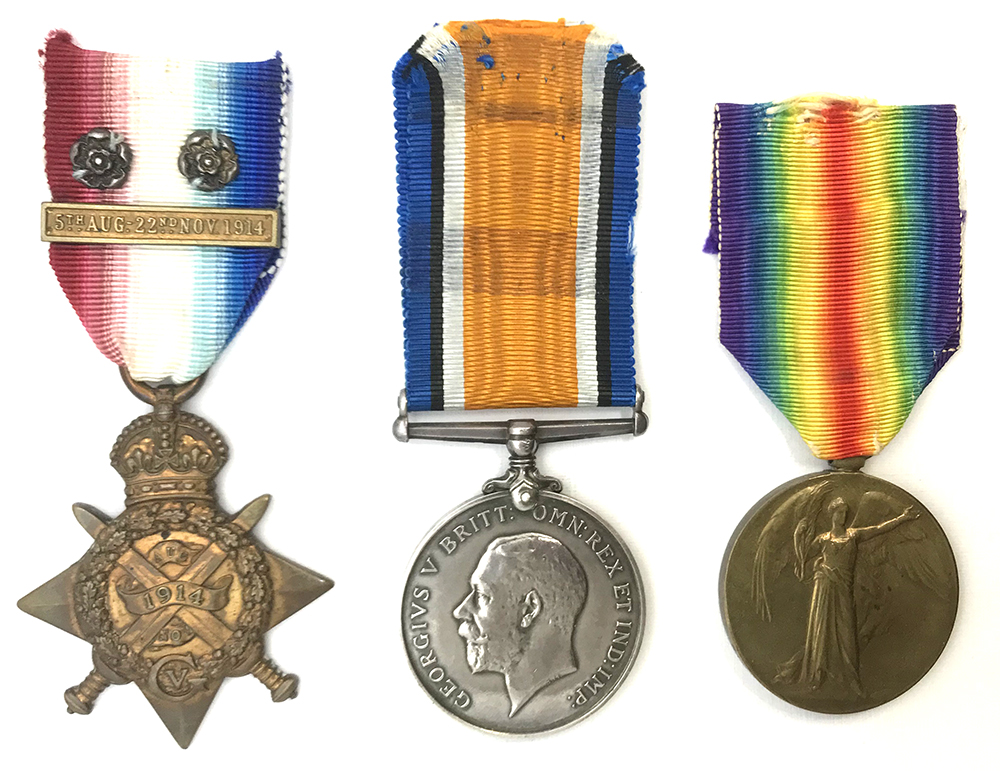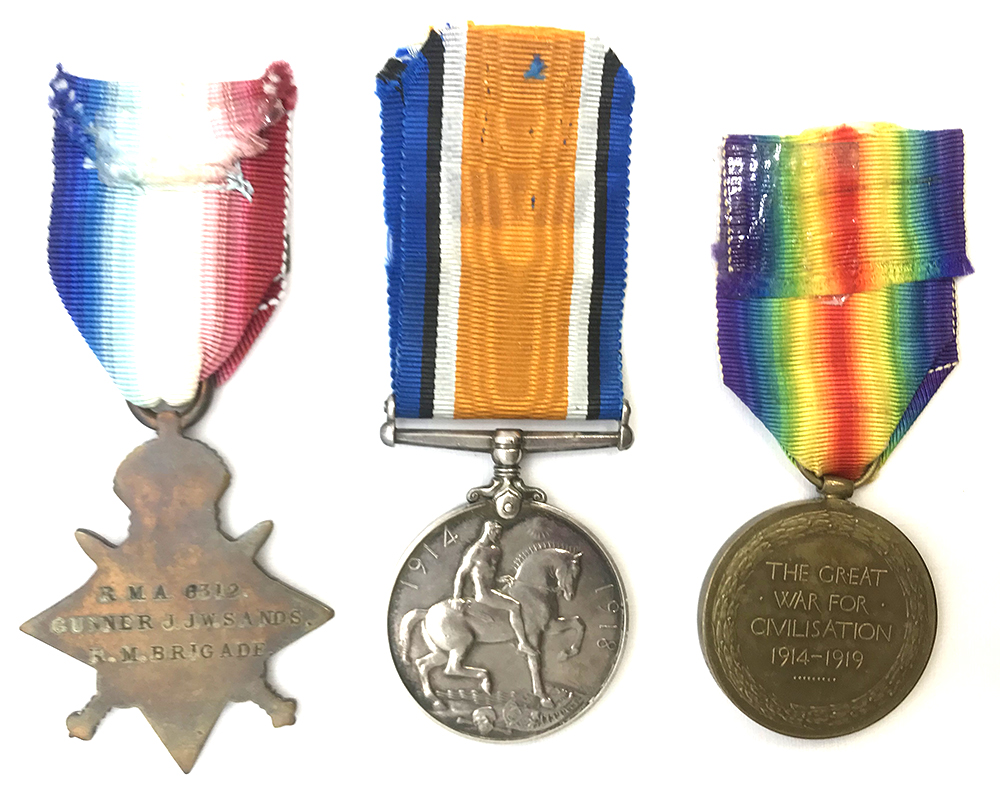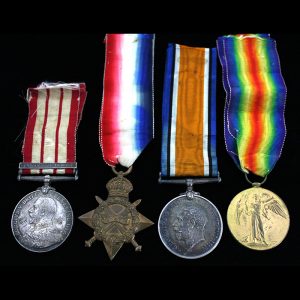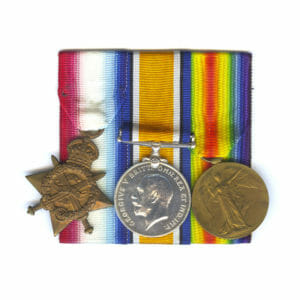Description
1914 Star Trio, with slider bar clasp, BWM and Victory, Pte J.J.W. Sands, Royal Marine Artillery, who arrived early into the war at Dunkirk and Ostend, later serving with the RMA Howitzer Brigade in 1915.
1914 Star with a contemporary slider bar 1914 clasp, with 2 original silver rosettes sewn onto the ribbon. Officially impressed in large Naval style: “R.M.A. 6312 GUNNER J.J.W. SANDS. R.M. BRIGADE”
Pair officially impressed: “R.M.A. 6312 GR. J.J.W. SANDS.”
Rare to the Howitzer Brigade, each gun required 60 men but there were very few that were built and used, with only 12 Howitzers built in total for the entire force, each R.M.A. Brigade would man a single gun, which weighed almost 100 tons and could fire a 1450lb high explosive round to almost 11000 yards at 340 metres per second. Also moving the guns required a custom build Foster-Daimler Steam Tractor.
John Joseph William Sands was born on 24th August 1878 in Chelsea, London.
He first enlisted for the Royal Marines at London on 10th October 1896.
He served a full 12 years before being discharged on 9th October 1908.
He was mobilised for War service on 2nd August 1914 and was immediately posted with the Royal Marine Artillery to Ostend.
His war services show:
27 to 31st August at Ostend.
7th to 18th October 1914, at Dunkirk, (Defence of Antwerp)
26th March 1915 to 2nd October 1915 and 6th October 1915 to 9th May 1917, Served with the Expeditionary Force in France.”
During this time he was serving with the Royal Marine Artillery’s Howitzer Brigade.
The Colossal 15 Inch Howitzer Artillery Guns were huge and just one required 60 men to operate it, it fired a 1400 pound shell up to 10,795 yards.
Moving the guns required a specially built Foster-Daimler Steam Tractor as they were so heavy.
After the war was over he was demobilised on 17th March 1919.
Following his second retirement from the Royal Marines, according to the 1939 Census he had moved to Portland, Dorset where he worked as a Night Watchman at HM Prison Portland which was a Borstal at the time.
He died in Weymouth, Dorset during 1951.





